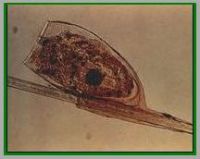
UPPSALA, SWEDEN, September 12 — New data shows that women who have hysterectomies after menopause have a four-times greater heart attack rate than those who keep their uteruses. A study led by Dr. Margareta Falkeborn, of the Department of Public Health and Caring Sciences/Geriatrics at Sweden’s University of Uppsala, found no increase in heart attack risk in premenopausal women who underwent hysterectomy unless both ovaries were removed as well.
Dr. Falkeborn’s study included 17,126 women who had undergone a hysterectomy and oophorectomy (removal of the ovaries) from 1965 to 1983. The postmenopausal women generally required hysterectomy for fibroid tumors (non-cancerous growths).
Young women with normal estrogen levels suffer in many ways from the loss of estrogen after hysterectomy with oophorectomy. Not surprisingly, the loss of estrogen’s well-known protective effect increases heart attack rate. The study findings are all the more meaningful because postmenopausal women were not previously thought to benefit from the low level of estrogen their ovaries produce.
Dr. Falkeborn and colleagues, writing in the September issue of the Journal of Clinical Epidemiology, speculate that there may be an association between fibroid tumors and heart attack.





















